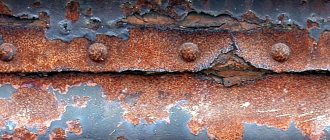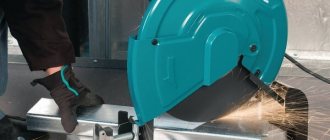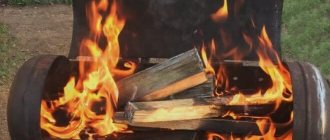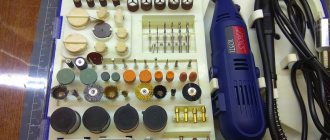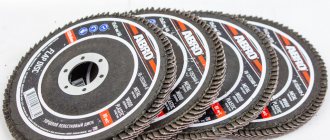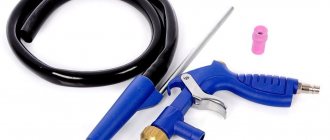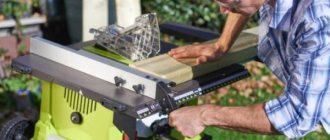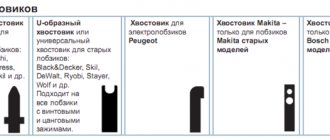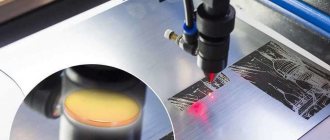11/15/2019 Author: VT-METALL
Issues discussed in the material:
- Why is it important to protect metal products from corrosion?
- What types of corrosion exist?
- What are the ways to protect metal products from corrosion?
Man has been using objects made of metals since ancient times. Until now, they remain an important component of our lives, and the most popular are products made of iron and its alloys. However, they all have one serious drawback, namely susceptibility to corrosion, that is, the ability to be destroyed during the oxidation process. Timely protection of metal products from corrosion makes it possible to increase their service life.
Types of corrosion
A variety of metals are used everywhere. Almost all of them succumb to corrosion over time. This is the name given to the process of material destruction due to oxidation. That is why the issue of corrosion protection is so relevant. Timely processing extends the service life of metal products and protects them from harmful environmental influences.
To properly protect a structure from destruction, it is necessary to understand the classification of corrosion processes. This will help you choose the right product and processing method.
There are three types of metal corrosion:
- atmospheric;
- liquid;
- soil
Atmospheric corrosion is caused by the influence of the squat layer of the atmosphere. With this type of destruction, metal products come into contact with oxygen and water vapor in the air. Chemically active substances as impurities accelerate the process of metal destruction.
Relative air humidity is the main criterion for dividing into subspecies. There are dry, wet and wet atmospheric corrosion. At its core, the first is a chemical process, while wet and wet are electrochemical.
This is the most common type of destruction, since all metal structures that are located in the open air are subject to it. In particular, we are talking about:
- pipelines;
- metal parts of buildings;
- supports;
- bridges;
- vehicles.
Liquid corrosion affects structures located in a liquid environment. Conditions of interaction with water allow us to distinguish the following subspecies:
- corrosion during incomplete immersion - only part of the structure is in a corrosive environment;
- along the waterline;
- with complete immersion - the metal is completely immersed in the liquid;
- underwater;
- corrosion during variable immersion - the structure is immersed in a liquid medium periodically, completely or partially.
The service life of above-ground and underground metal structures is affected by the composition of the soil and groundwater. The chemical processes occurring due to these features cause soil corrosion. As a result of this process, rust may appear on:
- pipelines;
- underground sealed tanks;
- supports of various metal structures.
Types of corrosion processes
The type of steel corrosion can be chemical or electrical. In the first case, the metal and oxidizing atoms react and form strong bonds. The resulting structure does not conduct electricity, unlike the original composition of the product. Electrical corrosion is characterized by complete decomposition of the metal, which becomes unsuitable for further use.
In addition to chemical and electrical, other types of corrosion can be distinguished:
- The most common type of corrosion is gas corrosion, which occurs at high temperatures and minimal moisture content in the working environment;
- atmospheric corrosion develops when a metal product is in a gas environment of high humidity;
- biological microorganisms can also have a negative impact on the strength and integrity of steel structures, causing oxidation of the material;
- when different metals interact, the composition and stationary potential of which are different, rust spots may appear at the points of contact of the products;
- exposure to radioactive radiation leads to the destruction of the steel structure and the development of corrosion processes.
In most cases, it is difficult to identify any one type of corrosion that negatively affects the condition of metal structures. The destruction and degradation of steel is caused by the influence of several factors, such as high humidity, unfavorable atmospheric composition, biological activity of microorganisms, and background radiation. The only way to eliminate or reduce the rate of corrosion spread is to protect the material with special compounds and means.
Characteristic types of damage to metals by rust
In most cases, rust occurs on the surface of the metal. However, in some cases, the lesion can penetrate deeper. Depending on how the corrosion spreads, it can be:
- uniform - when the structure is destroyed over the entire surface, which is typical for alloys with a single-phase structure;
- local (spots, ulcers, pinpoints) - affects mainly multiphase alloys with a coarse structure, less often pure metals or single-phase alloys after the destruction of the protective film;
- intergranular - the most dangerous due to the fact that the destruction is invisible externally; aluminum alloys and chromium-nickel steels are susceptible to it;
- cracking;
- subsurface;
- combined.
Another criterion for categorization is the mechanism of the corrosion process. According to him, corrosion can be chemical or electrochemical.
Chemical destruction is caused by oxidation of the surface of the product in a liquid medium. Of all the metals, steel is most susceptible to the effects of moisture, with the exception of stainless steel. The iron contained in it forms three types of oxides. In most cases, reliable protection of a steel structure from destruction is impossible. Also, under the influence of the liquid, cobalt, nickel and lead are quickly destroyed.
Electrochemical corrosion is accompanied by the generation of electric current. It can occur in various environments and is always associated with serious destructive processes. For example, if power lines and electrical circuit elements corrode, then in addition to the corrosion itself, energy consumption increases significantly.
Industrial protection methods
Methods for protecting metal from corrosion for industrial purposes include:
- heat treatment;
- paintwork;
- passivation or alloying;
- protective metal coating;
- electrical protection;
- use of inhibitors.
Heat treatment is reduced mainly to increasing the heat resistance of metals. This can be achieved in various ways. This method of protection is aimed at combating selective, point and intercrystalline destruction. As a result of heat treatment, structural heterogeneity is eliminated and the alloy is deprived of internal stress.
Corrosion protection using paint coating is very popular due to its reliability. This is an affordable method with simple technology, which also allows you to change the color and appearance of the structure. As a result of using this protection technology, a continuous film is formed on the surface of the product. It prevents the destruction of the metal structure and protects against aggressive environmental influences. Anti-corrosion paints and varnishes usually consist of film-forming substances, solvents, plasticizers, pigments, fillers, and catalysts. The effectiveness of this method largely depends on the correct application technology and surface preparation. An important factor is the thickness of the coating.
Passivation involves adding alloying components when melting metals. Such impurities include chromium, nickel, and molybdenum. This really effective method slows down the anodic process. The metal alloy enters a state of increased resistance to destruction—passivation occurs. An oxide film with a perfect structure is formed on the surface. Iron, aluminum, copper, magnesium, zinc, and alloys based on them are processed in this way. As a result of passivation, metals acquire not only corrosion resistance, but also heat resistance.
Metal coating has become widespread as a protective agent. It can be cathodic or anodic. The integrity of the protective layer guarantees effective protection of the metal from unwanted influences. However, damage or the formation of pores on the outer layer can provoke oxidation of the inner one. Therefore, this method is controversial. The formation of a protective metal coating can occur in different ways:
- electrochemically;
- immersion in molten metal;
- applying a molten coating to the surface to be treated with a jet of compressed air;
- chemical
Electrical protection is used when it is necessary to protect boilers, steel parts, underwater parts of marine transport, parts of drilling platforms. The product is connected to the negative pole of the current source. Due to this, the current in the electrolyte passes through the anode plates, and not through the protected part.
Inhibitors are substances that slow down or stop chemical reactions that cause rust. When introduced into an aggressive environment, inhibitors create an adsorption film on the surface of the product. Thanks to it, the electrochemical parameters of metals change and electrode processes slow down. This is an effective and technologically simple protective measure.
TOP 8 means of combating metal corrosion
| Photo | Name | Rating | Price | |
| #1 | Rust converter "ASTROhim Antiruster" | ⭐ 4.9 / 5 15 — votes | Find out the price | |
| #2 | Anticorrosive "DINITROL 479" | ⭐ 4.8 / 5 8 — votes | Find out the price | |
| #3 | Rust converter "Fenom" | ⭐ 4.8 / 5 15 — votes | Find out the price | |
| #4 | Anti-corrosion agent “Hi-Gear Black beauty” (HG5754) | ⭐ 4.7 / 5 8 — votes | Find out the price | |
| #5 | Permatex Rust Treatment Converter | ⭐ 4.65 / 5 6 — votes | Find out the price | |
| #6 | Rust converter “Hi-Gear No-Rust” (HG5718) | ⭐ 4.6 / 5 3 - votes | Find out the price | |
| #7 | Rust converter "Autoprofi Galvanization" | ⭐ 4.55 / 5 10 — votes | Find out the price | |
| #8 | Anti-corrosion soundproofing agent “Noxudol 3100” | ⭐ 4.5 / 5 5 — votes | Find out the price |
Which anti-corrosion compound would you choose or recommend?
Take the survey
If we analyze the reviews of Russian users, the leaders in the domestic market of anti-corrosion products were named such brands as ASTROhim, Fenom, Permatex, Hi-Gear, Autoprofi, ABRO and some others . The products of these companies have passed all the necessary levels of licensing and safety and quality certification. To avoid purchasing counterfeits, it is recommended to safely ask the seller for copies of documents confirming the originality of the products.
#8. Anti-corrosion soundproofing agent “Noxudol 3100”
"Noxudol 3100" is a Swedish product. The composition is designed to protect the car not only from corrosion, but also from the penetration of external noise into the interior, since its viscous structure has good noise and vibration absorption properties.
Anti-corrosion and anti-noise agent “Noxudol 3100”
Noxudol 3100 goes on sale in 1 liter cylinders. The material is suitable for processing both external and internal surfaces of different parts of the car. The composition has a fairly thick consistency, which is why it takes a long time to dry, which will have to be taken into account when choosing this particular anticorrosive agent.
The method of applying Noxudol 3100 is indicated by the manufacturer on the packaging - both spraying and application with a painting tool are acceptable.
Composition characteristics:
| Characteristic name | Indicators |
| Manufacturer country | Sweden |
| Product type | Insulating anti-corrosion coating |
| The basis | Water |
| Application method | Spray or brush |
| Compound | Not disclosed |
| Peculiarities | Forms a protective layer that protects against corrosion and reduces the spread of noise. |
| Minimum metal surface temperature during application, ˚С | not lower than +10 |
| Application area | Anti-corrosion treatment of cars |
pros
- Pronounced elasticity of the composition, immunity to abrasive load.
- Excellent moisture-proofing abilities.
- The composition is very easy and even to apply.
- The composition is immediately positioned both as an anti-corrosion agent and as an “anti-noise” - it fully meets the requirements for high-quality sound insulation of the cabin.
- Excellent resistance to any theoretically possible temperature changes during operation;
- Versatility - suitable for all surfaces of the car.
Minuses
- Duration of drying of the first layer;
- The cost is too high for the average Russian consumer.
Noxudol 3100
#7. Rust converter "Autoprofi Galvanization"
Autoprofi is another Russian brand popular among car owners. Our rating includes the “Galvanization” rust converter, which goes on sale in 500 ml bottles equipped with an adjustable spray bottle. By setting the desired jet length or torch width, the product can be sprayed even on hard-to-reach car surfaces.
A very worthy domestic product – rust converter “Autoprofi Galvanization”
The solution is made on the basis of orthophosphoric acid, which is modified by a number of different additives. After the reaction, the resulting coating is enriched with zinc molecules, known for its high anti-corrosion qualities.
After each applied layer has dried, as the manufacturer suggests, the converter does not require rinsing - just wipe the treated surface. However, experts who have worked with this solution still recommend washing it by adding a little soda to the water for this purpose.
Composition characteristics:
| Characteristic name | Indicators |
| Manufacturer country | Russia |
| Product type | Rust converter solution |
| The basis | Acid with zinc enrichment |
| Application method | Spraying with a spray bottle, application with a brush is possible. |
| Compound | Orthophosphoric acid - 30%; nsurfactants, butanol - 5%; deionized water - 30%; active additives - 5÷15%; dye - 5%, corrosion inhibitor |
| Peculiarities | Forms a protective film, increases the adhesive ability of materials |
| Application area | Anti-corrosion treatment of car parts and widespread use in everyday life |
Mode of application:
- After cleaning the surface, shake the can and apply the product to the corroded dry area.
- When the layer dries, the remaining product and rust residues should be removed with a coarse, but not metal brush.
- Then repeat the application once or twice, after which the remaining product should be cleaned with a dry cloth or brush.
pros
- Quickly removes corrosion from the surface.
- Provides long-term and reliable protection against the appearance of new rust spots.
- Due to the clever design of the sprayer, it is convenient to treat any surface, including hard-to-reach places.
- Quite affordable price.
Minuses
- If you ignore the washing step, the paint composition may adhere very unevenly to the surface.
- Smudges may appear during application.
Autoprofi Galvanized
#6. Rust converter “Hi-Gear No-Rust” (HG5718)
Hi-Gear is an American brand whose products are very popular in car service centers in many countries around the world. Over the period of its use, the auto chemical products of this manufacturer have gained complete trust among both professional and home craftsmen.
The HG5718 converter goes on sale in the form of an aerosol, in cylinders with a net mass of 370 g.
Rust converter with protective effect “Hi-Gear No-Rust”
Thanks to the aerosol version, application of the composition is significantly simplified, even in hard-to-reach places.
Converter characteristics:
| Characteristic name | Indicators |
| Manufacturer country | Licensed in the USA, produced more often in Russia |
| Product type | Chemical rust converter |
| The basis | Alcohol |
| Application method | Aerosol spray |
| Peculiarities | Forms a protective film, increases the adhesive ability of materials |
| Temperature of the metal surface during application, ˚С | +10 to +30 |
| Application area | Anti-corrosion treatment of automobile bodies and other steel parts of machines and building structures. |
Mode of application:
- Surface preparation is carried out in the same way as when using other products. That is, cleaning with a wire brush and sandpaper, rinsing and drying.
- Before applying the composition, the bottle should be shaken well.
- Spraying should be done until the surface is evenly covered with the converter. When applying, the cylinder should be at a distance of 150÷300 mm from the surface to be treated.
- The composition is applied in two or three layers, each of them must dry for at least three to five minutes.
- Rust converter that gets onto adjacent areas of the surface is removed with alcohol.
- Before you start using or painting the treated part, the last applied layer of converter must be left for at least 2–3 hours.
When working with aerosol, it is necessary to protect the respiratory tract and mucous membranes of the eyes well to avoid chemical burns.
pros
- Convenient and quick application of the composition even in hard-to-reach areas of the structure.
- Long-lasting and reliable corrosion protection;
- Fast setting of each layer;
- The material performs two functions at once - it removes rust and primes the surface.
Minuses
- The material is very aggressive and requires the use of protective equipment for the respiratory system, mucous membranes, and eyes.
- High cost of the cylinder.
HG5718
#5. Permatex Rust Treatment Converter
“Permatex Rust Treatment” is an American product that produces several types of similar formulations.
Rust converter “Permatex Rust Treatment”
Permatex Rust Treatment is packaged in a 236 ml plastic jar. This solution is a quick-drying, latex-based solution that is milky white in color. A solution is applied to the damaged area of the metal - it will stop the development of corrosion by forming a protective layer of soil on the surface. "Permatex Rust Treatment" transforms old rust and prevents the formation of new lesions.
This compound can even be applied directly to rusted, wet metal. It performs several functions at once - it dries, drawing out moisture, transforms rust and primes the area damaged by it.
Composition characteristics:
| Characteristic name | Indicators |
| Manufacturer country | USA |
| Product type | The solution is a rust converter with priming ability. |
| Solution base | Latex |
| Application method | Using a brush |
| Peculiarities | Forms a durable, moisture-proof protective film |
| Temperature of the metal surface during application, ˚С | From +10 to +32 |
| Application area | Anti-corrosion treatment of steel parts |
Mode of application:
- The surface is cleaned of dirt and lubricants. The loose layer of oxides and old paint are removed.
- Then you should thoroughly wash off the rust particles.
- The solution must be mixed well before use.
- Apply the composition to the surface generously, with a sponge or brush.
- Within 20 minutes, the color changes from purple to black, regardless of humidity and air temperature. If the color changes unevenly, this indicates that another layer of material should be applied.
- The second layer is applied 15÷30 minutes after applying the first.
- Before applying primer or paint, the treated surface should be left for at least 24 hours.
pros
- The applied composition is converted into a black protective coating under the influence of iron oxide.
- The solution is non-toxic, non-flammable and completely safe.
- Rapid action is noted.
- The composition can be applied to a damp surface.
- The material performs two functions at once - it removes rust and primes the surface.
Minuses
- You have to leave the treated area for too long before painting.
- High price.
Permatex Rust Treatment
#4. Anti-corrosion agent “Hi-Gear Black beauty” (HG5754)
"Hi-Gear Black beauty" is an anti-corrosion product from a famous American brand. Supplied on counters in aerosol cans. The layer applied to the surface is an elastic coating - the material acquires this quality due to the rubber filler contained in it.
Anti-corrosion agent – bitumen-based coating “Hi-Gear Black beauty”
“Hi Gear Black beauty” has excellent coverage and excellent adhesive properties. The product is suitable for treating the underbody, fenders, sills and other lower and upper surfaces of the car. In service conditions, craftsmen use the composition to treat welds, surfaces covered by panels, trunk, etc.
An anti-corrosion agent can protect metal from reagents applied to the road surface in winter, salt, and atmospheric influences.
Surely there will be a use for this composition in private households - the site is full of steel structures that require reliable protection against corrosion.
“Hi Gear Black beauty” is able to displace moisture from joints and crevices, forming a waterproof layer. In addition, due to the rubber filling, unlike conventional bitumen, the material is resistant to low temperatures. It does not wear out during use and dries quickly after application. A layer of material applied to the bottom reduces road noise and vibrations of the body structure, which significantly increases the operating comfort of the vehicle. If necessary, the protective coating can be covered with primer and paint compositions.
Composition characteristics:
| Characteristic name | Indicators |
| Manufacturer country | Licensed in the USA, produced more often in Russia |
| Product type | Aerosol coating |
| The basis | Bituminous |
| Application method | Spray |
| Compound | Oxidized bitumen, petroleum distillers, butane, propane, rubber, functional additives |
| Peculiarities | Forms a protective film, increases the adhesive ability of materials |
| Minimum metal surface temperature during application, ˚С | not lower than +10 |
| Application area | Anti-corrosion treatment of metal, in particular the underbody and wheel arches of cars. Resistance to abrasive loads and the possibility of painting allow the material to be used as an anti-corrosion primer when processing steel building structures. |
Mode of application:
- The surface to be treated is cleaned of the remnants of the previously applied anti-corrosion coating, dirt and dust;
- The metal is cleaned of rust using abrasive methods, then treated with a rust converter, after which the area must be degreased with white spirit or gasoline.
- Next, the surface should be thoroughly dried.
- The container of anti-corrosion agent is shaken vigorously for about a minute.
- The composition is applied in parallel strips, each of which will overlap the previous one by 20÷30 mm;
- During the first application, 2÷3 layers are applied; during subsequent repairs, another 1÷2 layers can be added;
- Drying of the coating is carried out for at least 24 hours.
- After drying, remove any product that gets on the surface near the area to be repaired. This can be done using HG5625 or HG5628, which are specifically designed for removing bitumen stains.
It is not allowed to spray the composition near an open fire, or to carry out work at temperatures above +40 degrees.
Let's take a look at the advantages and disadvantages, according to user reviews:
pros
- Very high degree of protection of the metal surface.
- Convenient application of the composition.
- High-strength adhesion to the surface.
- Abrasion resistance.
Minuses
- High price.
HG5754
#3. Rust converter "Fenom"
“Fenom” is another Russian-made product, available for sale in 0.11 liter plastic bottles. It would seem that the product has a low price, but given the small volume of packaging, we can immediately conclude that you will obviously have to buy more than one bottle. Therefore, the factor of affordable cost turns out to be quite “vague”.
"Fenom" - rust converter into soil
“Fenom” is suitable for removing rust that has already appeared, and for semi-preparatory processing of metal before painting. The composition creates excellent adhesion between the primer and paint layer, protecting the metal from corrosion damage for at least 5–7 years.
"Fenom" very quickly removes rust from metal, transforming it into a hard layer of soil. This is its main advantage over other similar materials.
Composition characteristics:
| Characteristic name | Indicators |
| Manufacturer country | Russia |
| Product type | solution |
| Solution base | acidic |
| Composition of the solution | Orthophosphoric acid; corrosion inhibitors; antioxidants; water-soluble phosphates |
| Application method | Recommended – with a brush |
| Peculiarities | Forms a protective film over which painting can be carried out. |
| Minimum surface temperature during application, ˚С | 10 |
| Application area | Anti-corrosion treatment and repair of car bodies. Can be widely used for household purposes |
pros
- There is no need to rinse off the solution before applying paint.
- The resulting film provides long-term protection of the metal from corrosion;
- The drug has a very fast effect.
- The product is used at any stage of metal damage; corrosion.
- Metal parts coated with this product can be joined by welding without reducing the quality of the seam.
- The solution increases the adhesive ability of the metal to adhere to the paint layer.
Minuses
- The packaging is too small, even for a small amount of work you will still need to purchase several bottles of the material.
- Quite a high cost for such a small volume of a bottle of solution.
Rust Converter Fenom
#2. Anticorrosive "DINITROL 479"
Anti-corrosion agent “DINITROL 479” is produced in Germany. This protective composition is made from synthetic rubber to which corrosion inhibitors have been added. The product is designed to reliably protect the car body from gravel, sand, stones, road dirt, chemical reagents, and ordinary salt, which is often sprinkled on roads. DINITROL 479 itself does not contain aggressive components that are dangerous for metal, plastic and other coatings.
Anticorrosive "DINITROL 479"
Coating with this product also provides a significant anti-noise effect. In order to achieve high-quality sound insulation using DINITROL 479, it is recommended to apply it in two or three layers with a consumption of 1 liter per 0.5 m². The thickness of the layers must be at least 2 mm.
“DINITROL 479” forms a durable elastic film on the surface, characterized by high wear resistance and excellent adhesive properties. When applying, the composition must be heated to a temperature of 35–40 degrees - it will adhere perfectly to the surface, without even leaving smudges. During operation, the coating can withstand temperatures from -40 to +85 degrees.
With proper application of the material, the protection of the car will be very durable.
Composition characteristics:
| Characteristic name | Indicators |
| Manufacturer country | Germany |
| Product type | water-based mixture |
| The basis | synthetic rubber |
| Application method | Spraying, brushing or brushing |
| Compound | Not listed in specifications |
| Peculiarities | Forms a protective film against rust and external noise. Before application, the product must be heated to +35 degrees |
| Minimum surface temperature during application ˚С | up to +15 |
| Application area | Anti-corrosion treatment of the car - underbody and wheel arches. It is also used in construction to protect steel structures in contact with the ground. |
pros
- Excellent level of noise absorption;
- High moisture resistance;
- Tightness of the coating - with high-quality application, water has no chance.
- Excellent grip;
- The total layer can reach a thickness of 10 mm.
Minuses
- Drying time for each layer is at least 4 hours.
- High price.
DINITROL 479
#1. Rust converter "ASTROhim Antiruster"
ASTROhim is a domestic product. Rust converters and other chemicals are produced in the form of sprays and aerosols; solutions can be packaged in 500 ml jars or 250 ml plastic bottles equipped with a spray bottle.
Converter "ASTROhim Antiruster"
Despite the affordable price, the composition is in no way inferior to more expensive analogues. The converter is made on the basis of orthophosphoric acid, which actively affects corrosion layers.
After the product is applied to the damaged area, the dissolved rust is removed with a special napkin. All this leads to the formation of a protective film on the metal surface, which simultaneously ensures high adhesion to subsequently applied paints and varnishes.
As a preventative measure, ASTROhim is sometimes applied to undamaged metal, preparing it for painting.
Main characteristics of the composition:
| Characteristic name | Indicators |
| Manufacturer country | Russia |
| Product type | Solution |
| Solution base | Acidic |
| Composition of the solution | orthophosphoric acid - 30%; water; zinc oxide - 5%; additives - 5% |
| Application method | spray or brush |
| Peculiarities | forms a protective film suitable for priming and painting |
| Minimum surface temperature during application, ˚С | 10 |
| Application area | everywhere, but mainly – car body repair |
Mode of application:
- Cleaning the surface from dirt and loose rust using a wire brush;
- Drying and degreasing of metal;
- Before using the converter, shake the bottle vigorously for about a minute and then spray or brush onto the affected, prepared area.
- The applied solution is left in this form for 20 minutes;
- The surface is then thoroughly washed and checked for any remaining rust. He wipes himself dry and looks around.
- If corrosion remains are found, the same treatment should be performed again;
- Paint and varnish compositions must be applied to the treated areas during the first 24 hours, after drying them well.
pros
- Affordable price.
- The converter does its job very well.
- Easy to apply in any convenient way.
- Well laid out instructions for use.
Minuses
- It is imperative to thoroughly rinse the solution.
ASTROhim Antiruster
* * * * * * * *
Now, knowing the best samples of anti-corrosion compounds, according to users, you can choose the appropriate option to complete your own task. But there is no need to reassure yourself - they say that with a good composition the result is doomed only to luck. No, without work experience it’s not at all difficult to “mess up”. Therefore, if you do not have confidence in your own abilities, it is better to contact the nearest service center and entrust this process to a qualified technician.
Household methods of protection
Methods of corrosion protection that are used in everyday life are simple and accessible. All activities come down to applying paint and varnish coatings. Metal protection involves the use of various means. Components may include:
- silicone based resins;
- polymer materials;
- inhibitors;
- metal filings.
If rust has already damaged the metal surface, you can prevent the spread of corrosion by:
- Primers. They provide good adhesion, so applying them to the surface before painting saves the consumption of the finishing coat. The composition contains inhibitory substances, which is why primers are so effective in protecting metal from corrosion.
- Stabilizers - with their help, iron oxides are converted into other substances. Such chemical compounds are not subject to rust.
- Substances that convert iron oxides into salts. Slow down the re-formation of rust.
- Resins and oils. Their action is to neutralize rust. Oils and resins bind its particles, compacting them.
If several products are used to treat the surface to prevent corrosion, it is better that they come from the same manufacturer. They must match each other in chemical composition.
You can do the work of applying paints and varnishes at home yourself. In most cases, this does not require the involvement of specialists.
In everyday life, the following metal structures most often require such treatment:
- roofs;
- gates;
- various fences;
- sports equipment;
- pipes;
- radiators;
- doors and handles.
Both new products can be treated to prevent their destruction, as well as those that have been in use for many years, but their service life needs to be extended.
Features of tread protection
Taking into account the physicochemical features of such protection of metal structures, we can conclude that the use of a protector is inappropriate if the structure is operated in acidic environments. Protective protection is recommended for use if the structure is located in a neutral environment (soil, water, air, etc.).
To protect an iron pipeline, it makes sense to use cadmium, chromium, zinc, magnesium (more active metals) as a protector. But even when using them, there are a number of nuances.
For example, pure magnesium has a high rusting rate, pure zinc dissolves unevenly due to its coarse-grained structure, and aluminum quickly becomes covered with an oxide film. To prevent negative phenomena, alloying components are introduced into the pure substance that will serve as a protector. In fact, the protector is not pure metal, but its alloy with other substances.
Magnesium protection
Magnesium alloys are most often used as protection. The alloying components of the composition are aluminum (maximum 7%), zinc (up to 5%), copper, lead and nickel are also introduced, but their total share does not exceed a hundredth of the composition. As a protector, such compounds can be used in environments with an acidity index of no higher than 10.5.
Even as part of an alloy, magnesium quickly dissolves, and then poorly soluble compounds appear on its top layer. Magnesium alloys have a significant drawback - after application, they can provoke cracking of metal products and contribute to the occurrence of increased hydrogen embrittlement.
Zinc protection
An alternative to magnesium alloy for protecting structures located in salt water are zinc compounds. The alloying components for zinc are cadmium (maximum 0.15%), aluminum (less than 0.5%) and small amounts of iron, lead and copper (total up to 0.005%). Such a protector will be ideal against the influence of sea water, but in neutral environments, zinc alloy protectors will quickly become covered with oxides and hydroxides, nullifying the entire anti-corrosion complex.
Zinc alloys act as protectors against corrosion, providing maximum explosion and fire safety. It is advisable to treat pipelines for flammable and explosive substances, such as gas, with these compounds. Such compositions receive another “point” for their environmental safety - no pollutants are formed during anodic dissolution. Therefore, zinc compositions are often used for corrosion protection of oil pipelines, as well as for oil tankers and ships.
Aluminum compounds are usually used to protect against exposure to running salt water. Zinc (up to 8%), magnesium (up to 5%) and indium with silicon, thallium and cadmium with a small proportion (up to 0.02%) are also introduced into the alloy. Additives prevent the formation of oxides on aluminum. Aluminum alloys are also suitable in environments where magnesium protection is used.
How to process metal with your own hands?
Carrying out anti-corrosion work independently requires compliance with a certain sequence of actions:
- The surface that needs to be protected from corrosion must be prepared. It is thoroughly cleaned from oil stains, rust and other contaminants. This can be done using metal brushes or special attachments for an angle grinder.
- When the surface is properly prepared for the application of primer or rust converter, apply a coat of the product. It should be completely absorbed and dry.
- After this, protective paint is applied to the metal surface. It is necessary to apply two layers, allowing each to dry thoroughly. It is worth taking care of protective equipment for performing work: gloves, goggles, respirator.
This is a standard scheme for treating a metal surface to protect it from destruction.
Protective paints for metal
Applying special protective paints to a metal surface is one of the most effective means against corrosion. When dry, they form a hard film containing pigments. The thickness of this film may vary depending on the purpose of the metal product. The thickness and nature of the interaction of the paint with the surface determine the protective properties of the coating.
Anti-corrosion agents for metal can be divided into three groups:
- primers;
- paints;
- products for applying directly over rust.
When choosing a protective paint, it is important to consider the properties of the metal surface on which it will be applied. For example, for ferrous metals such as steel, it is better to choose a primer that contains zinc. The fact is that a galvanized surface can withstand destruction for a long time. As a rule, the instructions contain information about what type of surface the product is intended for.
Rust paint becomes a good solution in a situation where the surface cannot be properly cleaned of rust. It is simple and easy to use, lays down in an even dense layer. The coating created by this paint is durable and resistant to corrosion. Despite the fact that there are already pockets of corrosion on the metal surface, rust paint will not allow them to grow and spread.
Most products are suitable for manual application at home. Some paints apply better if you spray them. The composition of the paints takes into account the fact that they will be used, among other things, to protect structures located on the street. The products can be applied outdoors. As a rule, anti-corrosion paints are applied in a fairly thick layer for best effect.
The painted surface looks aesthetically pleasing. At the same time, it is reliably protected from corrosion. The film formed as a result of dyeing prevents the negative effects of light, moisture, and impurities in the atmosphere. Surface protection against oxidation is provided for up to 8 years.
Why is it so important to protect metal products from corrosion?
Corrosion has a negative electrochemical and chemical effect on the integrity of the surface of objects made of steel and cast iron. As a result, metal products are corroded, they deteriorate and cannot be used for their intended purpose.
According to expert statistics, every year approximately 10% of the volume of all metals mined on the planet has to be spent on eliminating losses caused by corrosion. After all, the latter leads to the complete loss of metal objects of their operational properties.
As soon as signs of corrosion appear on products made of cast iron or steel, their tightness and strength decrease. At the same time, their ability to conduct heat, plasticity, and reflective potential decreases, in other words, a number of important properties are lost. All this leads to the fact that the structures are unsuitable for their intended use. That is why it is so important to correctly and timely apply existing methods of protecting metal products from corrosion, which will be discussed further.
SNiP norms and rules
Protecting metal structures from destruction at enterprises is a technological process in which it is necessary to comply with established standards. The official document that regulates the rules and regulations for anti-corrosion work is SNiP 2.03.11-85.
This document specifies acceptable methods for treating metal surfaces to prevent corrosion. These include:
- coating with paints and varnishes;
- impregnation with anti-corrosion compound;
- pasting with special protective films.
When performing protective work, the document prescribes taking into account the characteristics of the environment: the degree of aggressiveness, physical condition and nature of the action. For different environments, the use of materials is provided that can provide effective protection against destruction.
If the treatment of metal structures against destruction is carried out independently, the recommendations and rules from SNiP must be taken into account.
At the Cherepovets Metal Structures Plant, all work to prevent corrosion, from appropriate design to post-installation maintenance, is carried out taking into account state standards and rules. Confidence in the high quality of metal structures allows us to give our customers a guarantee of up to 24 months on all products.
Advantages and disadvantages of tread protection
The advantages of this method are:
- simplicity, autonomy and efficiency due to the absence of a current source and the use of magnesium, aluminum or zinc alloys;
- the possibility of forming single or group installations;
- the possibility of using tread protection both for designed objects and for structures already in operation;
- organization of protection in almost any conditions where it is impossible or impractical to construct current sources;
- if used correctly, the system can operate for a long time without any maintenance;
- safety and possibility of use in explosive objects (due to low voltages).
But this type of rust protection has its drawbacks:
- Limited application of the method in poorly conductive environments.
- Irreversible loss of tread.
- Possibility of contamination of adjacent areas.

